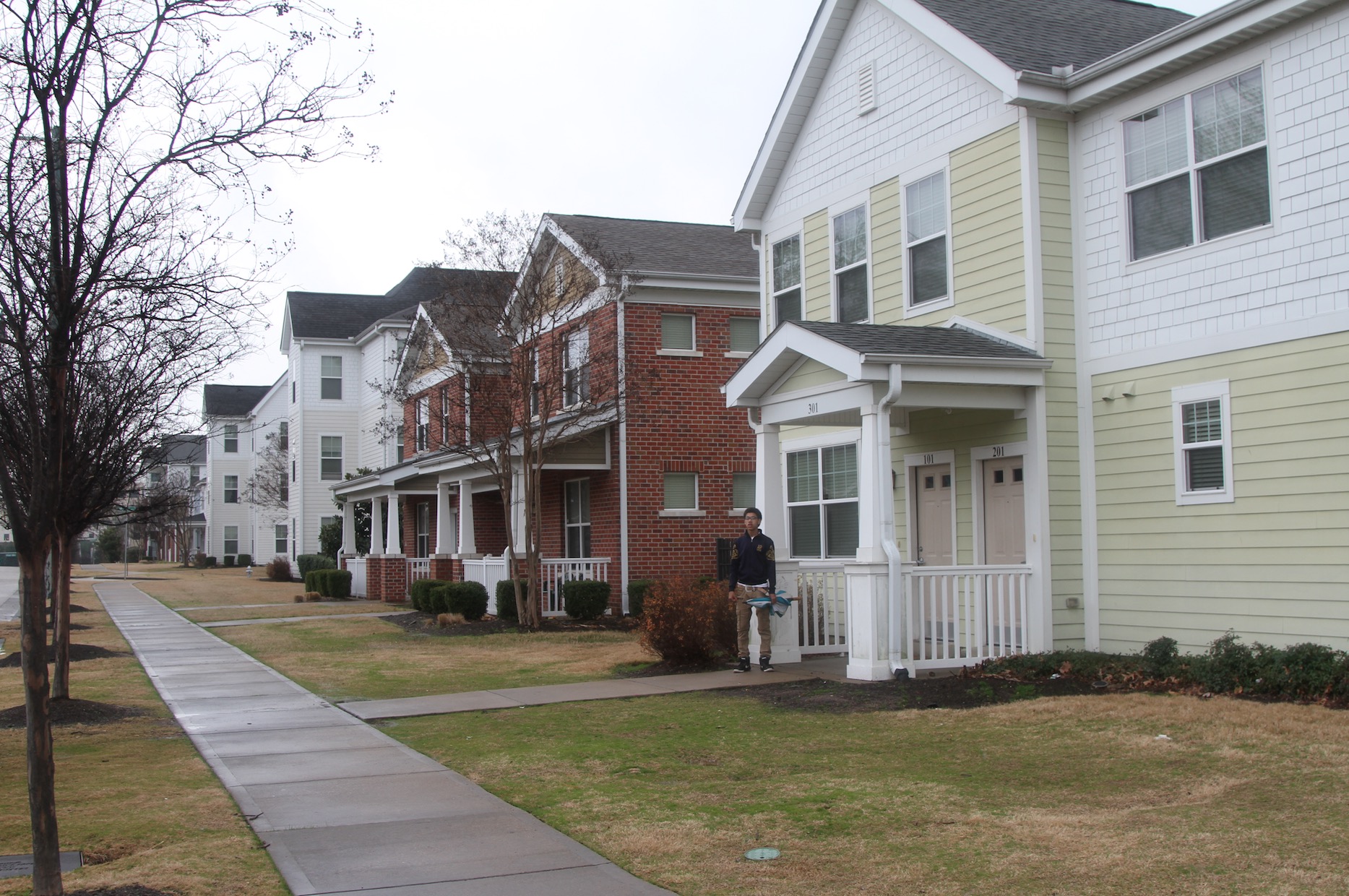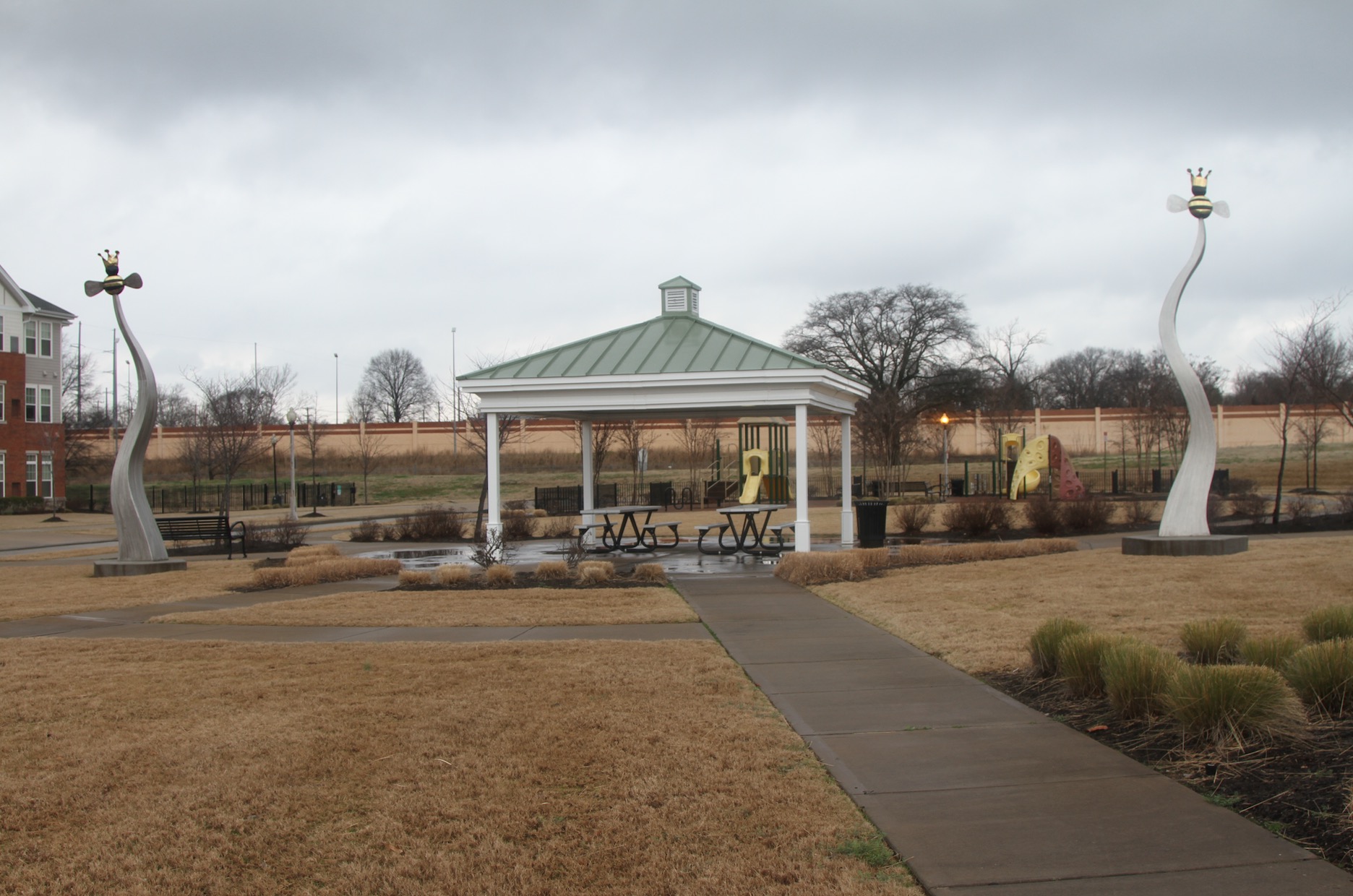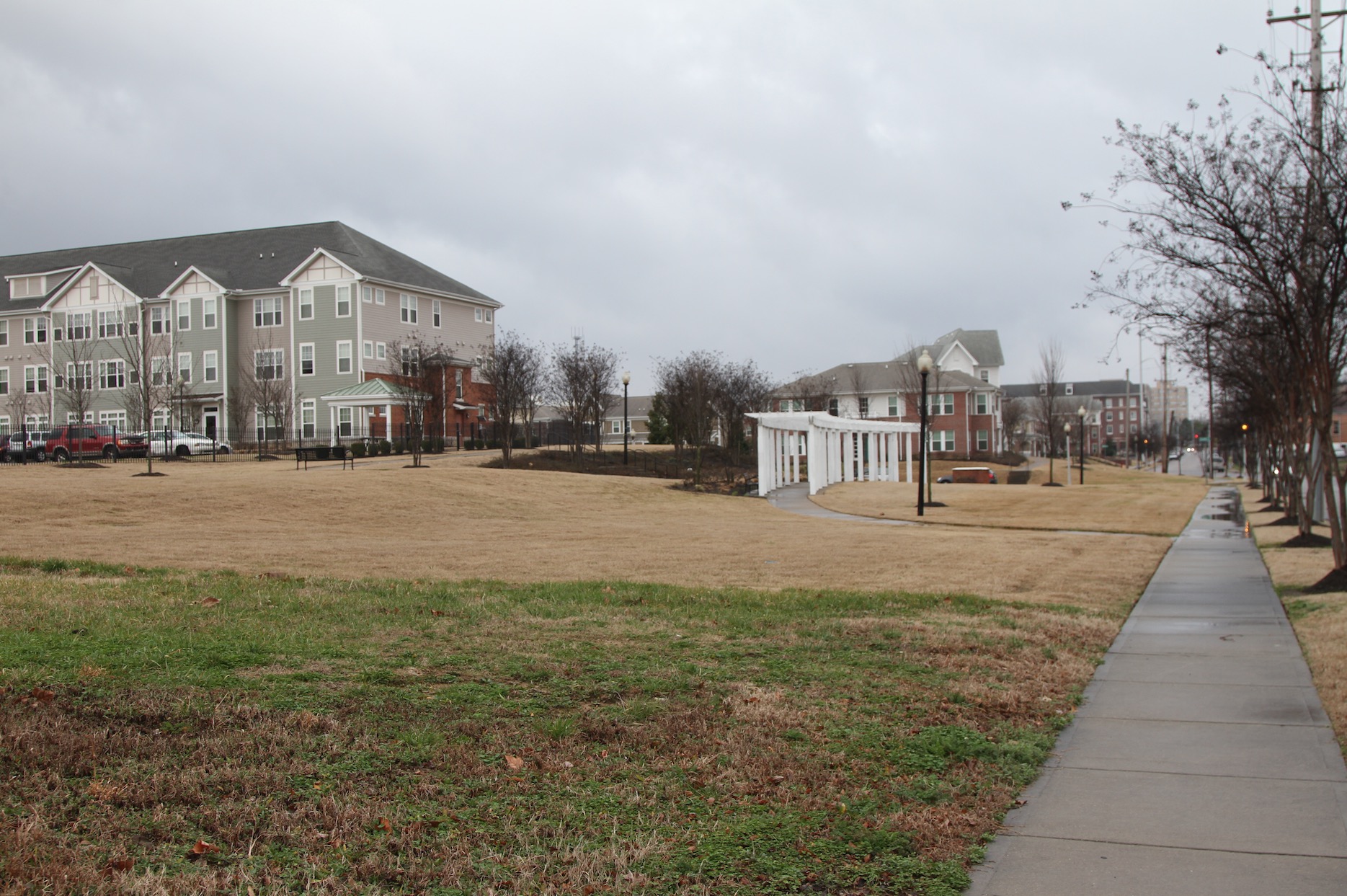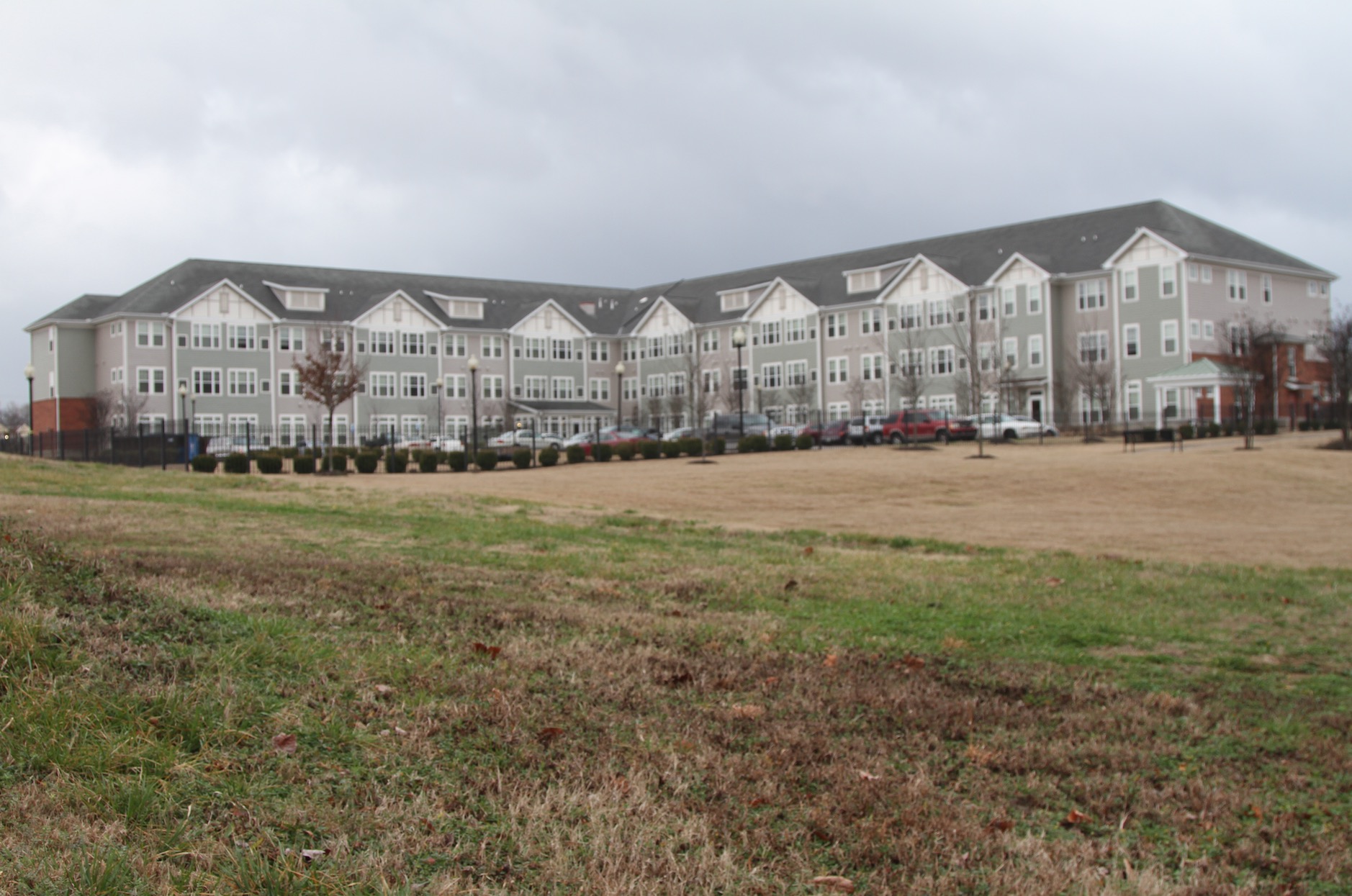Form Without Function in Public Housing
Johnny Sanphillippo is a Strong Towns founding member who blogs at Granola Shotgun. This post is republished from his blog with permission.
In recent years, many failed public housing projects have been redeveloped into mixed income HOPE VI neighborhoods. The theory underlying the HOPE VI program was that concentrated physically isolated low income housing projects trapped people in poverty and kept families dependent on government aid from generation to generation. By integrating different kinds of people at a variety of economic levels, the residents would enjoy a better quality of life, be less stigmatized, and more importantly would have access to greater upward mobility. Legends Park in Memphis is one such redevelopment.
This aerial view shows how Legends Park is an expression of the New Urbanist movement with a grid of streets and pocket parks reminiscent of pre Word War II towns. But there’s a problem. The superficial look of the place is at odds with the larger institutional dynamics that funded, built, and maintain it.
I’m profoundly ambivalent about these places. I don’t doubt they’re an improvement over whatever used to occupy this landscape. But in order for these places to get built, there’s a mind bending amount of paperwork that only a full staff of professionals could ever navigate during many years of applications, reviews, studies, and so on. Those professionals themselves need years of funding from a larger agency just to clear the first hurdles in order to receive the initial appropriations. And each dollar that comes from the feds also comes with endless strings and compliance procedures which take more funds and years more time to process. Check out the Grant Administration page from the HUD website.
The result is a single monolithic neighborhood built at once with a single institutional owner. The tacked on front porches are symbolic, rather than functional. The peaked roofs hint at domesticity, but the parking lots all say generic garden-apartment complex in disguise.
It’s also designed never to change, unlike an actual pre-World War II town which was able to flex along with shifting circumstances. And since it was all built simultaneously, it’s aging all at once too. The precarious federal funds that keep this place afloat are vulnerable to the same cutbacks and benign neglect that afflicted the older versions of public housing. It’s all on an intravenous drip from the higher ups.
Not far away are remnants of previous iterations of public housing. This one dates back to the early 1970s and has been given a recent face lift with a decorative cornice along the roofline and spot lighting. I call this the Ramada Inn treatment. High rise buildings are neither good nor bad. If they’re in a highly desirable location like Midtown Manhattan or on the beach at Waikiki, people with money seem to like them real well. Put them in a desolate wasteland, and… not so much. Architectural and urban form are cultural proxies for other things like status and respectability—or the opposite. But unto themselves the buildings are just piles of sticks and bricks.
If we were really interested in building strong resilient communities that also happened to lift up lower income people we might approach the situation differently. First, ownership of property has been one of the primary ways people have grabbed hold of the first rung of the wealth ladder. Subsidized rental accommodations don’t allow for equity. The second way lower income people have built up personal wealth over time is from home businesses. It’s illegal to operate a small business from subsidized housing. So this sort of housing is a stop gap. These are halfway houses. And perhaps we need some. But this stuff doesn’t scale to the required need. And there is no obvious vehicle to get people from Point A to Point B.







The broad white middle class didn’t happen all by itself. It was (past tense) the result of very specific federal programs that pushed people up from landless peasants to small scale property owners. The ability of workers to sell their labor at a middle class wage wasn’t a naturally occurring process either. The value of their labor was artificially propped up by federal policies for decades in the middle twentieth century. And the ability of uneducated people to improve their skills so they could move up the value chain also wasn’t accidental. It was part of an intentional collection of federal programs that facilitated higher education. Some people were channeled to home ownership and university. Others were deliberately directed to public housing and a different destiny. This wasn’t by mistake. These were seen as the begrudging undeserving poor. And they remain so to this day.
(All photos by Johnny Sanphillippo.)





A reliance on federal funding for housing puts local entities at the mercy of distant decision makers whose priorities may or may not be aligned with theirs. Cities and advocacy groups should be thinking about how to re-localize and claim more control over the way we tackle these problems.